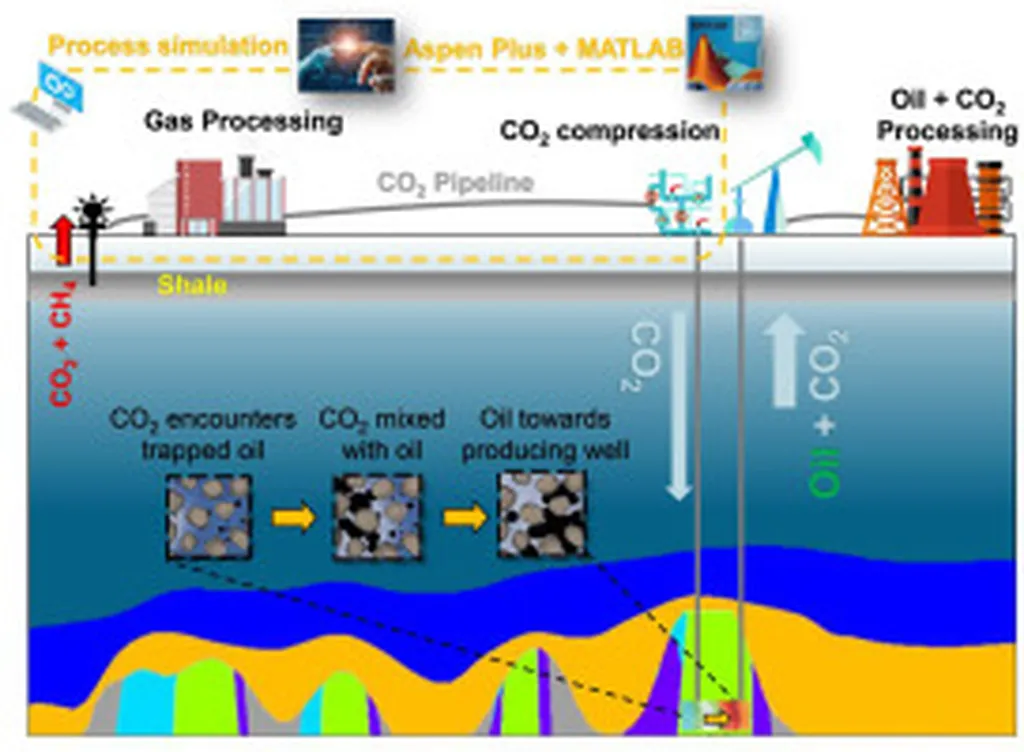In the quest to make carbon dioxide-enhanced oil recovery (CO2-EOR) more efficient and environmentally friendly, researchers have developed a novel approach that could significantly improve sweep efficiency and geological CO2 sequestration. This breakthrough, published in the journal *Results in Engineering* (formerly known as *Results in Physics*), offers a promising solution to longstanding challenges in the energy sector.
The study, led by Pengwei Fang from the University of Chinese Academy of Sciences and the Institute of Porous Flow and Fluid Mechanics, introduces a chemically enhanced water-alternating-gas (CWAG) injection technique. This method leverages a pressure-regulated, hydrophilic CO₂-responsive hydrogel-to-foam transition system to enhance oil recovery and facilitate CO2 storage.
“Our research addresses critical issues such as gas channeling, limited sweep efficiency, and restricted CO2-oil miscibility in heterogeneous reservoirs,” Fang explains. The team achieved this by engineering a quaternary ammonium surfactant (HXA-1) with unsaturated alkyl chains and hydrophilic moieties. This innovative surfactant reduces oil-water interfacial tension and enables an in-situ gel-to-foam phase transition under CO2 pressure.
Core flooding experiments demonstrated that the CWAG technique forms a stable, piston-like displacement front, boosting oil recovery by 16% compared to conventional water-alternating-gas (WAG) methods. Additionally, the system achieved 91.2% plugging efficiency, indicating its potential to improve conformance control in heterogeneous reservoirs.
The study also revealed that the hydrophilic surfactant mitigates water-phase shielding and hydrophobic interactions, promoting CO2/oil miscibility and emulsification. “Under reservoir conditions, a 0.35 wt% HXA-1 solution absorbs twice as much CO2 as WAG,” Fang notes, highlighting the system’s dual functionality in enhancing oil recovery and CO2 sequestration.
The implications of this research for the energy sector are substantial. By improving sweep efficiency and CO2 storage capacity, the CWAG technique could make CO2-EOR more economically viable and environmentally sustainable. This multifunctional CO2-responsive material platform could pave the way for transformative solutions in carbon capture, utilization, and storage (CCUS) technologies.
As the energy industry continues to grapple with the challenges of decarbonization and resource optimization, innovations like the CWAG technique offer a glimpse into a more sustainable future. By bridging the gap between enhanced oil recovery and geological CO2 sequestration, this research could shape the trajectory of the energy sector for years to come.

